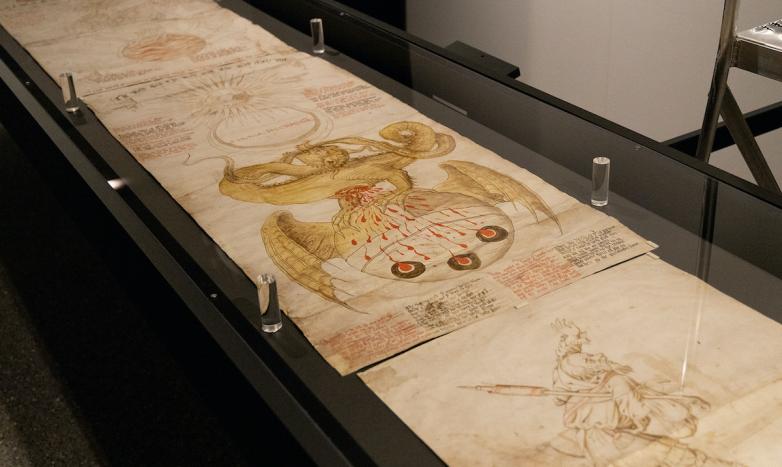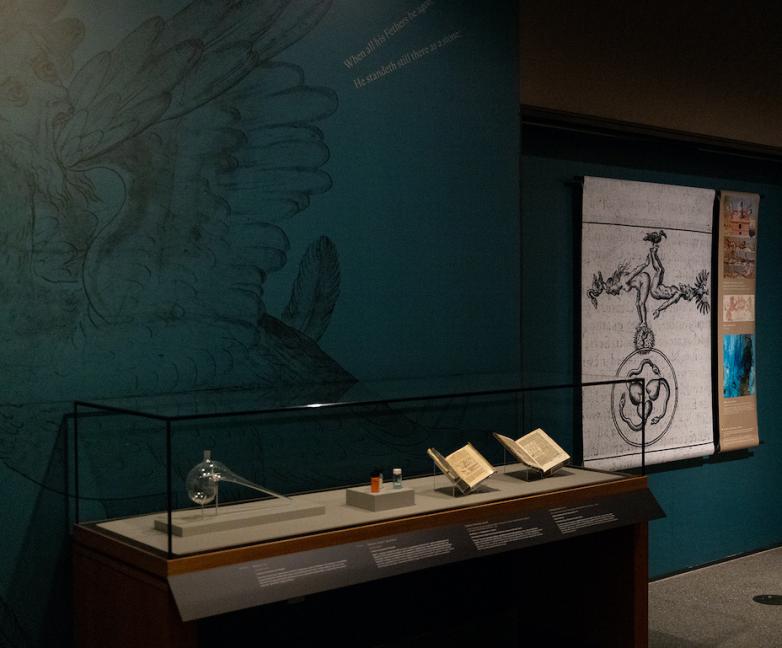"To improve alchemy’s reputation, they presented their work as both a practical art and an ancient philosophical tradition," said Jennifer Rampling, exhibition curator and Princeton University associate professor of history. "One way of doing that was to disguise their secrets using very elaborate, allegorical language and obscure imagery. This fantastical imagery reached its peak with the Ripley Scrolls."
Princeton owns two Ripley Scrolls, one of which was added to its collection in 2017 when they purchased the last one remaining in private hands—made by the English herald Leonard Smethley in 1624—at auction in London for £584,750 ($781,225). The library’s first Ripley Scroll, dating from the 1590s, was a gift from bibliophile Robert H. Taylor in 1958.
To read more about Professor Rampling’s research on the Ripley Scrolls, go here. The library is also hosting a Talk with Jennifer Rampling, author of The Experimental Fire: Inventing English Alchemy 1300-1700, via Zoom on April 27 at 3 p.m.
The exhibition remains on view through July 17, 2022.

















